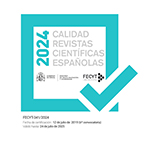From spatio-temporal anteposition to contrast: the diachronic development of the adversative connectives anziché and anzi
Abstract
The aim of this article is to propose a qualitative and quantitative analysis of the Italian connectives anzi and anziché from both a synchronic and a diachronic perspective. From a synchronic point of view, the work aims at observing the uses of the two connectives in spoken Italian; the diachronic analysis is instead aimed at illustrating the main factors at play in the processes of change of the connectives anzi and anziché from a semantic-pragmatic perspective. These connectives are characterised by their original spatial (in front of), temporal (before) and comparative (in front of/in comparison to) value, from which they develop corrective-substitutive and oppositional contrast values respectively. For the diachronic analysis, a multiple-stage model was adopted, highlighting the main stages that characterised the change in the connectives anzi and anziché. For each stage identified, the semantic aspects of the two connectives ((in)compatibility with the original value and/or with the new value (Giacalone Ramat / Mauri 2012)) and the syntactic-distributional aspects that contributed to their reanalysis were taken into account. The data analysed for this paper showed how the original value of the connectives under examination, the context in which the connectives appear from time to time and the frequency of use with which the novel values are used in different types of context constitute the crucial factors for semantic change.
Downloads
Article download
License
In order to support the global exchange of knowledge, the journal Cuadernos de Filología Italiana is allowing unrestricted access to its content as from its publication in this electronic edition, and as such it is an open-access journal. The originals published in this journal are the property of the Complutense University of Madrid and any reproduction thereof in full or in part must cite the source. All content is distributed under a Creative Commons Attribution 4.0 use and distribution licence (CC BY 4.0). This circumstance must be expressly stated in these terms where necessary. You can view the summary and the complete legal text of the licence.










